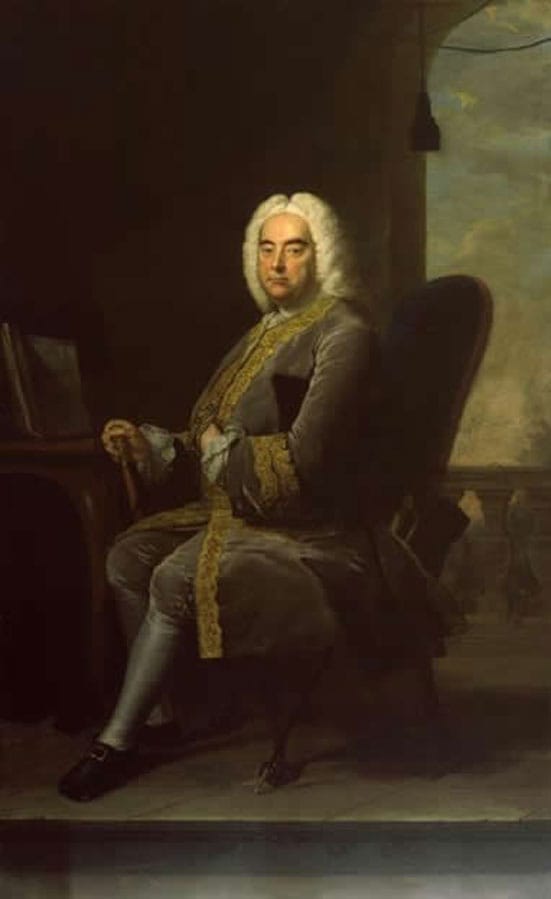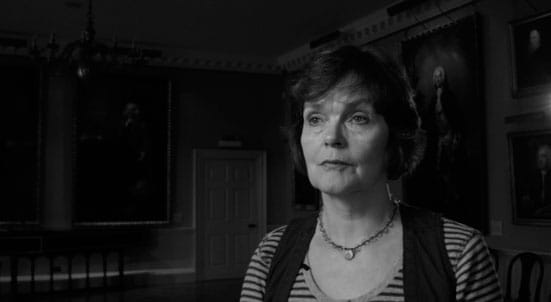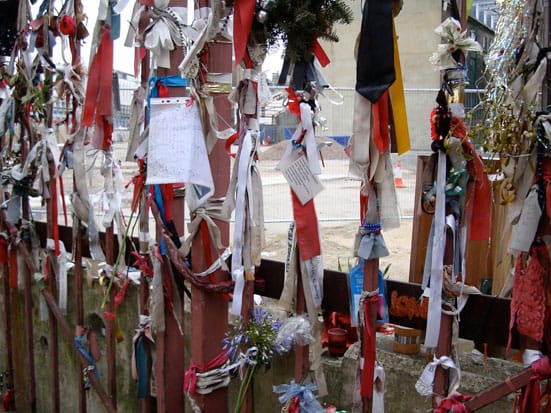1st April 2009 — 1st April 2009
Let me get usual über-complicated part over with first.
'Hide and Seek' is the second part of a work designated as 'The Foundling' created by the installation artist Terry Smith in collaboration with composer / sound designer (there's a difference?) Ian Dearden, curated by Gill Headly and produced by Clare Fitzpatrick. In short hand; it's a music / performance installation.
Part one ('Lost And Found') was performed at The Opera Festival in August 2008 and part three ('Drunk and Disorderly') will be performed in June in St. Georges Church, Venice. Presumably as a part of the Biennale, all of which give it bundles of oomph and kudos.
Musically, Dearden's composition shades, with good purpose, towards Meredith Monk (circa 'Turtle Dreams') and Karlheinz Stockhausen's 'Stimmung' territory, though less rhythmic than the former and, thankfully, lacking the slight hokum quality of the latter. Or perhaps Ligeti's vocal works would be more accurate a reference. In fact, those are just the best well known / least obscure signposts I can give you, as this style of music is capable of holding a near infinite degree of idiosyncrasy. What you actually get, for the uninitiated, are vocal lines alternating between long (held or undulating) notes in stunningly beautiful complex harmony with other-worldly exclamations, mutterings, squeaks and shrieks; equally beautiful if you have the ears to hear. The score itself was in fact, I believe, deconstructed Handel, although you'd have to be one Hell of a knowledgeable de-constructivist to work that out by yourself. Nevertheless, occasional suggestive touches of the Baroque would emerge, usually with subtlety, but occasionally with a startling 'blocky' boldness.
The performance began, unannounced, while the assembled (rather well-heeled) audience of the great and good were still quaffing a reasonable little 'white' in the Museum's main hall. Cunningly done, too; as one of the vocalists commenced singing upon the flight of stairs directly above us and the sounds of other music could be heard, more distantly, emanating from the higher reaches. Those performers closest to us them began to ascend initiating a general, rather serpentine, climb by the audience themselves. From then on, whatever part of the building you might be in; floor, room or stairwell, you found yourself in close proximity to one or more of the performers and an intriguing semi distance from the rest of the 'crew'. This created a (good-natured) almost Brownian Motion amongst the audience, lasting the entire duration of the piece.
Perhaps the neatest trick of the evening was to have the assembled performers dressed in mufti. Moving from room to room it was simply impossible to tell who was a performer and who an audience member until, that is, someone standing next to you commenced to 'wail'. Bit of a giveaway, that. Top marks to principal vocalist and primary prowler Linda Hurst for dealing with the more complex gurglings and gaspings with a graceful ease, whose parts appeared to act as a 'calling' focus for the other performers. An incredibly bravura display of avant-garde trombone playing by Miguel Tantos should also be mentioned, containing as it did ( along with wonderfully plangent tonality ) much dismantling of his instrument and the rhythmic banging of his slide against the floorboards at strategic moments.
But perhaps the drollest moment occurred in the top floor 'Handel Room' of the Museum (the old boy having a close historical connection to the institution) wherein, about half way through the evening, a large number of the 'string' vocalists had converged, sitting upon or lounging against its '40s' style wing-chairs and languidly cooing to each other, for all the world like some post-prandial conversation being conducted in Martian.
Actually assessing the quality of music that's existence is determined by its constant movement in and out of earshot is, unsurprisingly, difficult. You can't actually be definitive, but I can happily say 'it sounded good from where I was standing!' Structurally 'Hide and Seek' is wonderfully spacious music (Clive Williamson's piano parts being particularly strong in this aspect), affording the listener full time to tune into and soak up the engendered atmosphere. The work certainly contained near hallucinogenic elements. I constantly picked up the sound of a clarinettist playing in high register at a distant location only to find, as the performers assembled to take a bow at the end of the evening, that none such existed. Likewise; instead of the seven 'string' vocalists that I had, assiduously, head counted, there were in fact only six. Weird!
If I've any criticism to make it's that the piece ( at about 45 minutes duration ) could have been slightly longer; I rarely had chance to connect with what was happening on the video link monitors that were distributed throughout the building. It's also something of a shame (to the great credit of the piece) that this was a one-off performance. A week's worth of this every evening would by no means go amiss or exhaust its interest value. Tonight's audience were certainly both charmed and fascinated by the event; the closing round of applause being loud and heartfelt.
Should you be fortunate enough to be in Venice this June, do yourself a favour and catch the concluding work in this intriguing trilogy.
Keiron Phelan

George Frideric Handel
By Thomas Hudson
© National Portrait Gallery, London.
Lent as part of the exhibition 'Handel the Philanthropist' at the Foundling Museum

Linda Hurst in 'Hide & Seek'

Terry Smith 'Memorial'